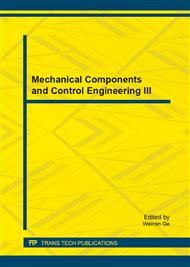p.647
p.653
p.657
p.661
p.665
p.669
p.673
p.677
p.683
Analysis of Current Optimization Method on Compensation
Abstract:
Nowadays, with the rapid development of industrial technology especially the power electronic technology, harmonic and reactive power problems are becoming severer. In sinusoidal conditions, there are no controversies on the definition of power quantities. In nonsinusoidal circuits, the traditional definition of active power is still applicable while the definitions of reactive power and apparent power are in controversy. Based on an optimization current decomposing method, this paper derives the expressions of optimal current and compensating current in a single-phase and a three-phase circuit by constructing a Lagrange functions. Based on simulation studies, the compensating effect of the optimization method is analyzed and shown; it can noticeably improve the efficiency of energy transfer in circuit. The paper presents all mathematical derivation of the method and verifies the results based on simulation.
Info:
Periodical:
Pages:
665-668
Citation:
Online since:
October 2014
Authors:
Price:
Сopyright:
© 2014 Trans Tech Publications Ltd. All Rights Reserved
Share:
Citation:


